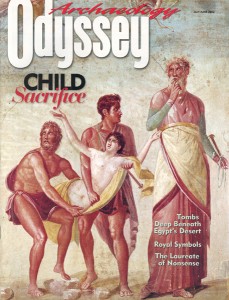Uncovering Abusir: The Czech Institute of Egyptology
Sidebar to: The Shaft Tombs of Abusir
In 1958 the Czech (or, at that time, Czechoslovak) Institute of Egyptology was established at Charles University, in Prague, to conduct archaeological excavations in Egypt. Between 1960 and 1974, the institute uncovered at Abusir the 5th Dynasty mastaba of vizier Ptahshepses (c. 2450 B.C.), the largest non-royal tomb of Egypt’s Old Kingdom (2920–2134 B.C.).
In the early 1960s the institute also took part in the campaign, headed by UNESCO, to record and safeguard ancient Nubian monuments that were to be submerged by the Aswan High Dam. In five seasons of work, the institute recorded about 400 rock inscriptions and 1,000 rock drawings and paintings.
After completing the excavation of Ptahshepses’s mastaba, Czech archaeologists began to uncover the unfinished pyramid complex of the 5th Dynasty king Raneferef (c. 2419–2416 B.C.), also at Abusir. In this complex, they found fragments of royal statuary and the remains of a papyrus archive—consisting of several fairly intact scrolls and hundreds of smaller fragments.
Not far from the Raneferef complex, the Czech team excavated two smaller 5th Dynasty pyramid complexes. One of these carries an inscription with the name of the owner: Queen Khentkaus, the wife of King Neferirkare and the mother of kings Raneferef and Niuserre. Only a few of the dozens of lesser tombs surrounding the royal pyramid complexes have been uncovered so far. Perhaps the most important among them are the mastabas of Prince Nakhtkare, possibly the oldest son of King Raneferef, and Princess Khekeretnebti, the daughter of King Djedkare-Isesi, who was buried at Saqqara.
Already a library member? Log in here.
Institution user? Log in with your IP address.

